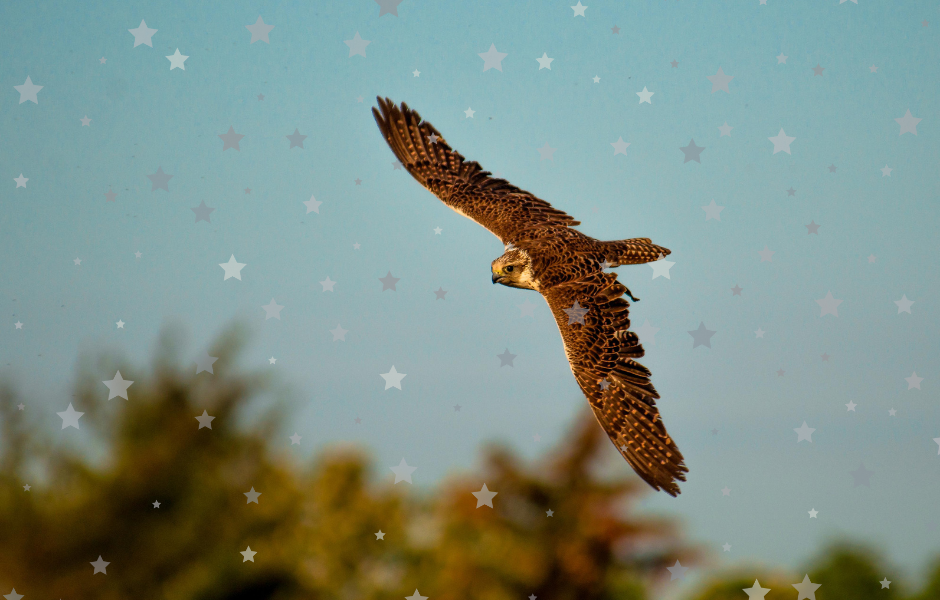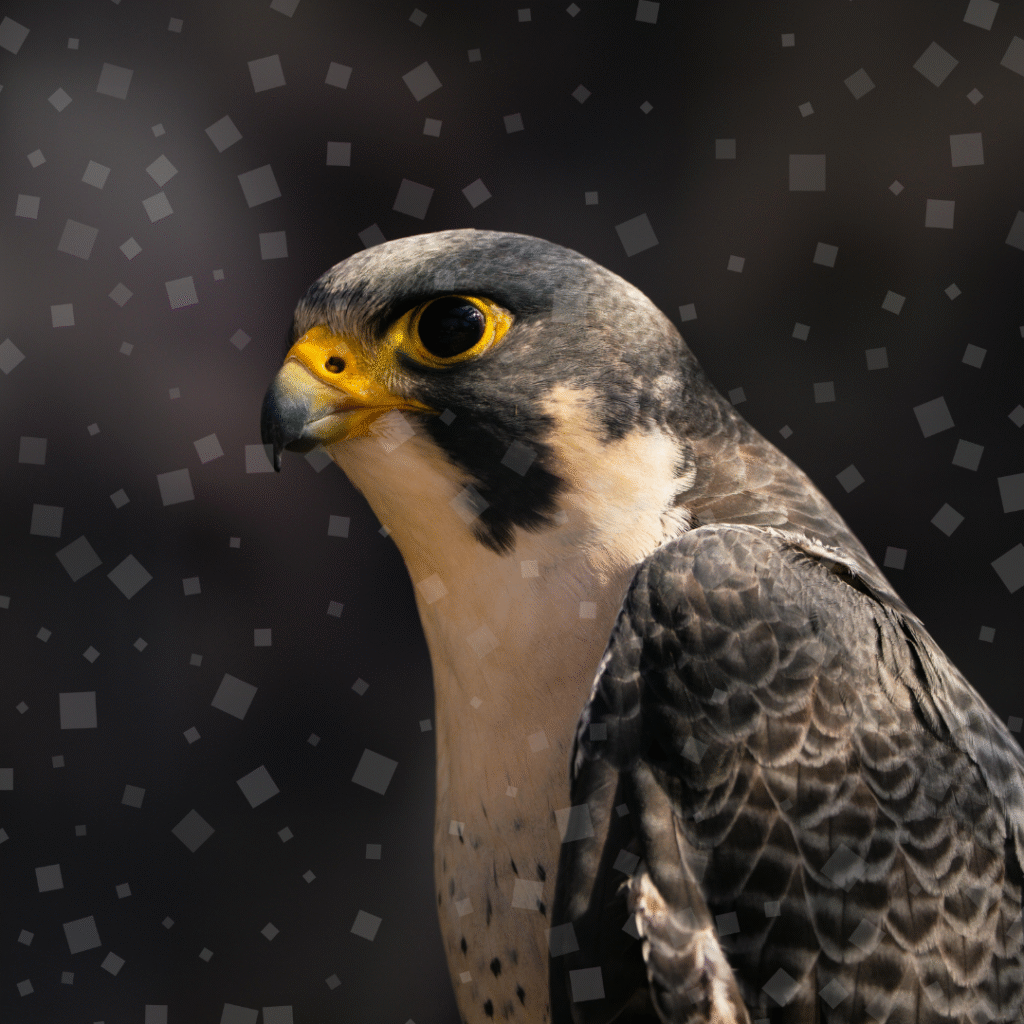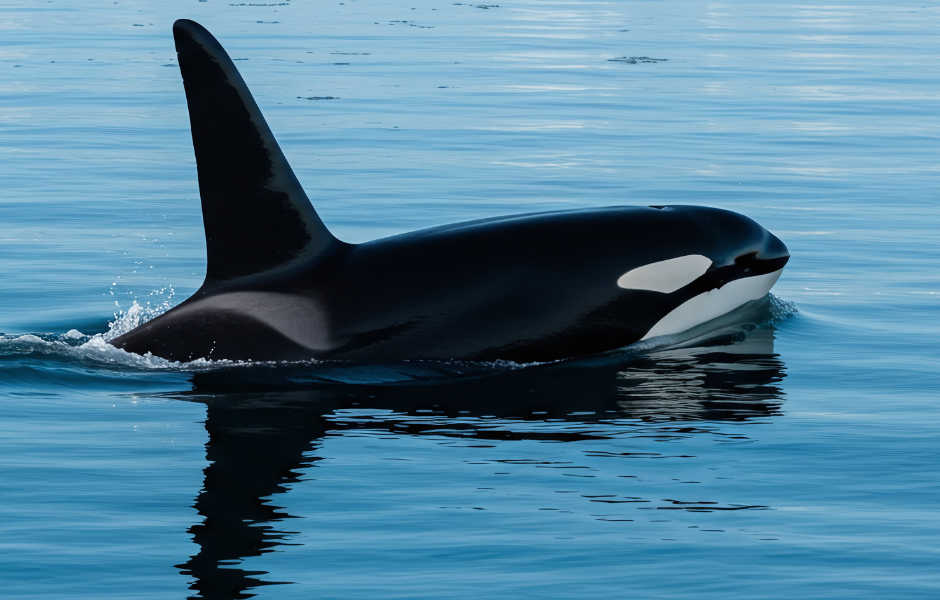
This children’s animal news article, Peregrine falcon chicks hatch at Ely Cathedral, Cambridgeshire, has been written for learners of English as a second or foreign language and native English speakers. It can help children practise reading and comprehension, learn useful vocabulary, and explore the exciting lives of peregrine falcons. Written by Sinead O’Carroll, a writer and EFL teacher since 2017.
A sky-high nursery in Cambridgeshire
High above the city of Ely in Cambridgeshire, UK, something special has happened. A pair of peregrine falcons have successfully hatched chicks on the west tower of Ely Cathedral – the first time in four years.
The falcons laid three eggs this spring. The first egg arrived on 19 April, the second on 21 April, and the third on 24 April.
Now, the fluffy chicks are being cared for by their parents in a nesting box at the top of the cathedral tower.
A welcome return
The first peregrine falcons were seen nesting at Ely Cathedral in 2019. In 2020, two chicks hatched. Then in 2021, bird lovers were given a real treat: a webcam was set up so people could watch the falcons raise their young from egg to flight.
This year, the Hawk & Owl Trust and the cathedral are once again sharing the excitement with visitors and webcam viewers.
The chicks usually stay in the nest for around 35 to 42 days before they fledge – that means flying away from the nest for the first time.
If you visit Ely Cathedral this summer, you might just spot them circling above the towers!
What makes peregrines special?
Peregrine falcons are powerful birds of prey and are often found on cliffs or tall buildings. The word “peregrine” comes from Latin and means “wanderer”, because these birds can travel far and wide.
They are famous for their hunting dive, called a stoop. During a stoop, a peregrine can reach speeds of over 200 miles per hour (322 km/h), making it the fastest animal in the world!
Females are larger than males, but both look very similar. They have sharp talons, strong beaks, and excellent eyesight – perfect for spotting prey from high above.
There are thought to be around 1,769 breeding pairs of peregrines in the UK today.
From danger to recovery
In the 1960s, peregrines nearly disappeared from the UK. People hunted them, and pesticides used for growing food made their eggs weak and easy to break.
But new laws were introduced to protect them, and their numbers slowly began to grow. Peregrines have now made homes in many cities and towns across the UK, including London, Manchester, and of course, Ely.
Some peregrines even return to the same nesting spots for many years, passing them on to new generations.To learn more about peregrines, visit the RSPB website.

Article vocabulary list
- Nest – A place where birds lay their eggs and raise their chicks.
- Fledge – When a young bird grows enough feathers to fly for the first time.
- Birds of prey – Birds that hunt and eat other animals, like falcons, eagles, and owls.
- Stoop – A fast dive that a peregrine falcon uses to catch prey.
- Talons – Sharp claws that birds of prey use to catch and hold their food.
- Pesticides – Chemicals used to kill insects or weeds, which can sometimes harm animals.
- Generations – Groups of people or animals born around the same time, often part of a family line.
- Recovery – Getting better or returning to a healthy state.
Comprehension questions
Just click the plus (+) to see the answer
1. When did the peregrine falcons at Ely Cathedral lay their first egg this year?
a) 21 April
b) 24 April
c) 19 April
Answer: c) 19 April
2. What is the name of the fast diving move peregrines use when hunting?
a) Plunge
b) Stoop
c) Swoop
Answer: b) Stoop
3. How fast can a peregrine falcon fly during a stoop?
a) 100 miles per hour
b) 150 miles per hour
c) Over 200 miles per hour
Answer: c) Over 200 miles per hour
4. What does the word “peregrine” mean?
Answer: It means “wanderer”, because they can travel far and wide.
5. Why did peregrine numbers fall in the 1960s?
Answer: They were hunted, and pesticides made their eggs weak and easy to break.
6. Where are peregrine falcons now often found in the UK?
Answer: On cliffs and tall buildings in cities like London, Manchester, and Ely.
7. What do peregrine falcons use their sharp talons and beaks for?
Answer: To catch and eat their prey.
8. How long do peregrine chicks usually stay in the nest before flying?
a) 10 to 15 days
b) 20 to 25 days
c) 35 to 42 days
Answer: c) 35 to 42 days
Sinead is a writer and EFL teacher with eight years’ experience. She’s a native English speaker who loves making news stories fun and easy to understand for children around the world. Her passions include travel, animals, and helping to make the world a kinder, more sustainable place.




